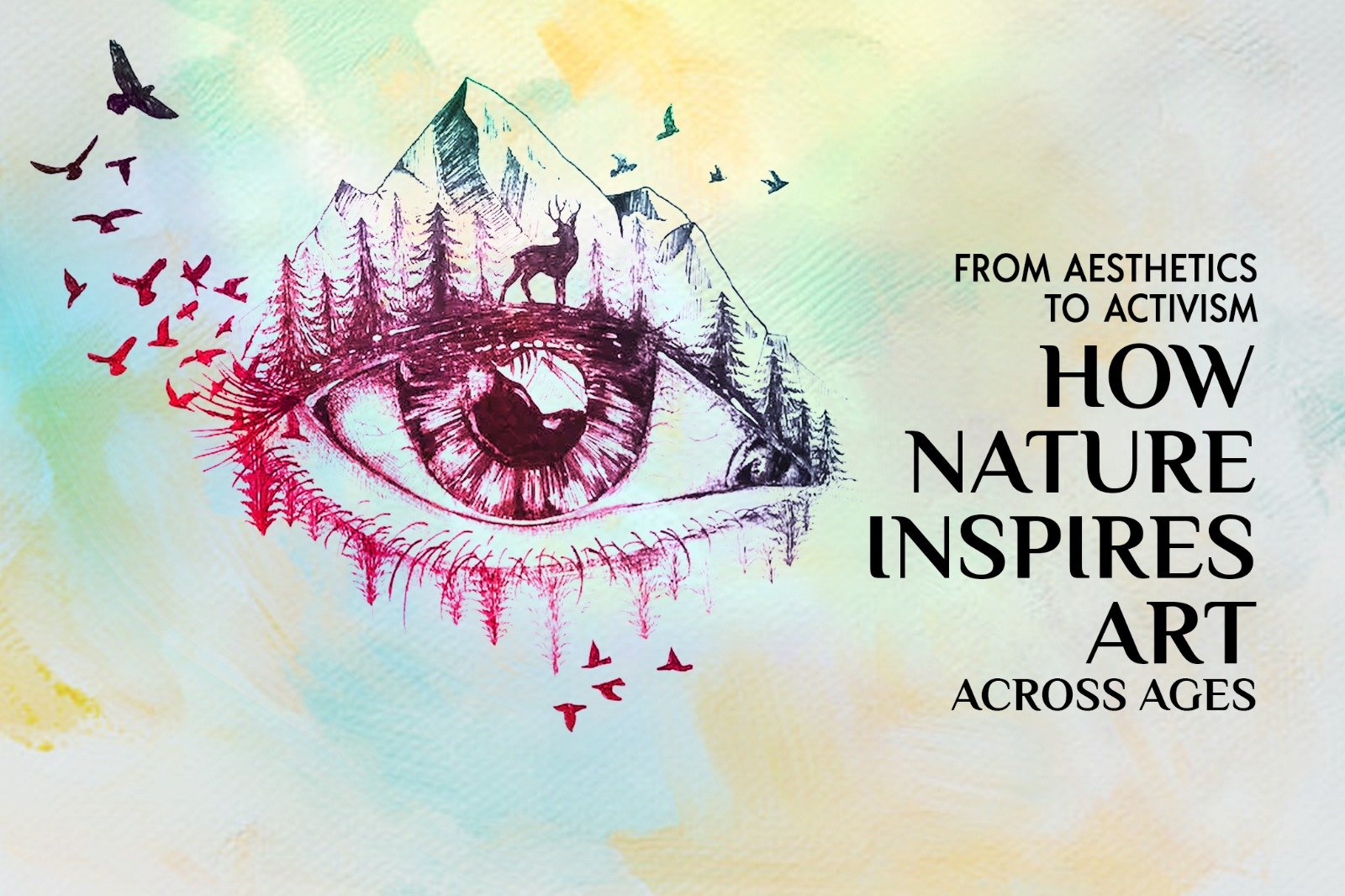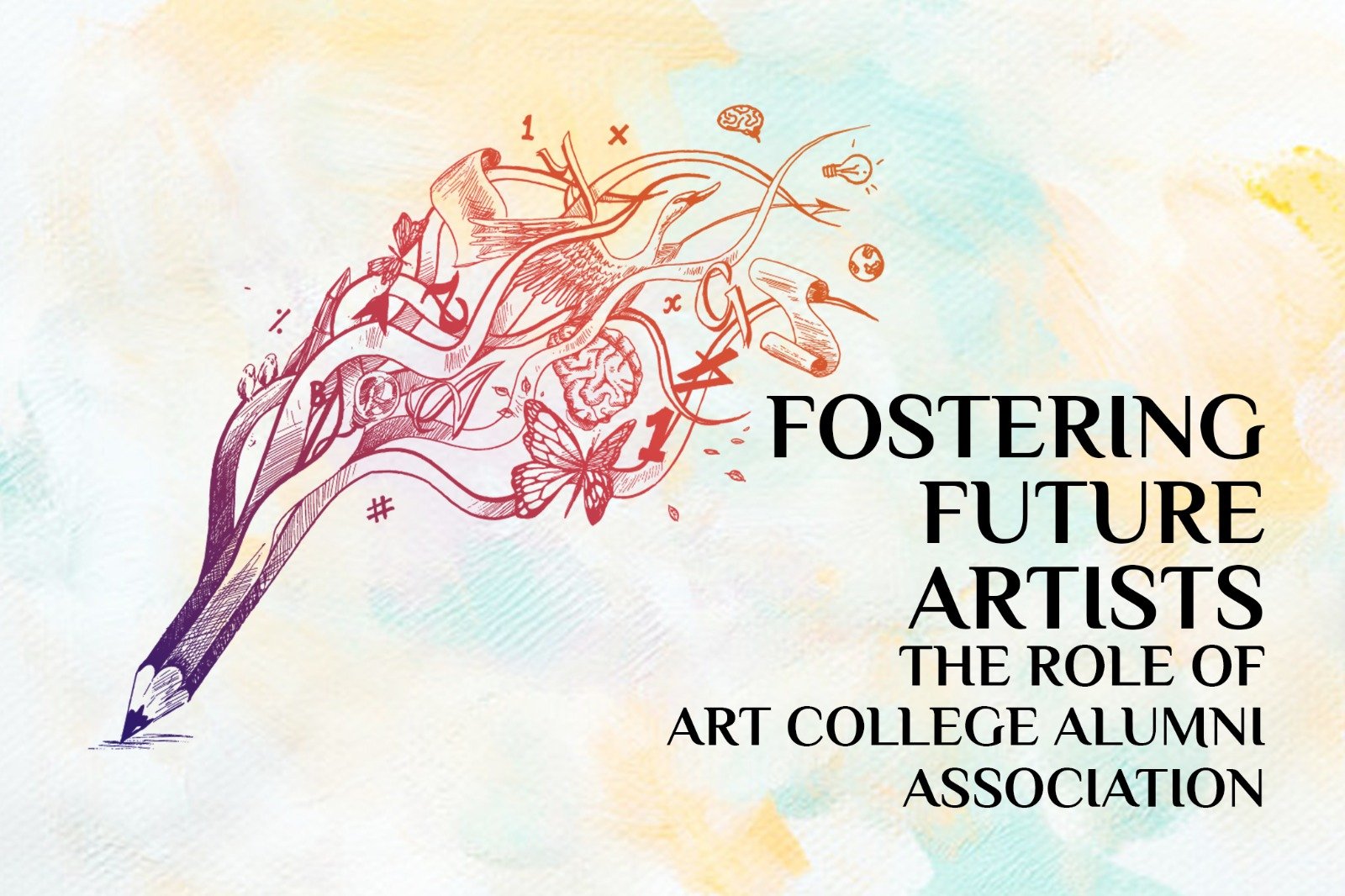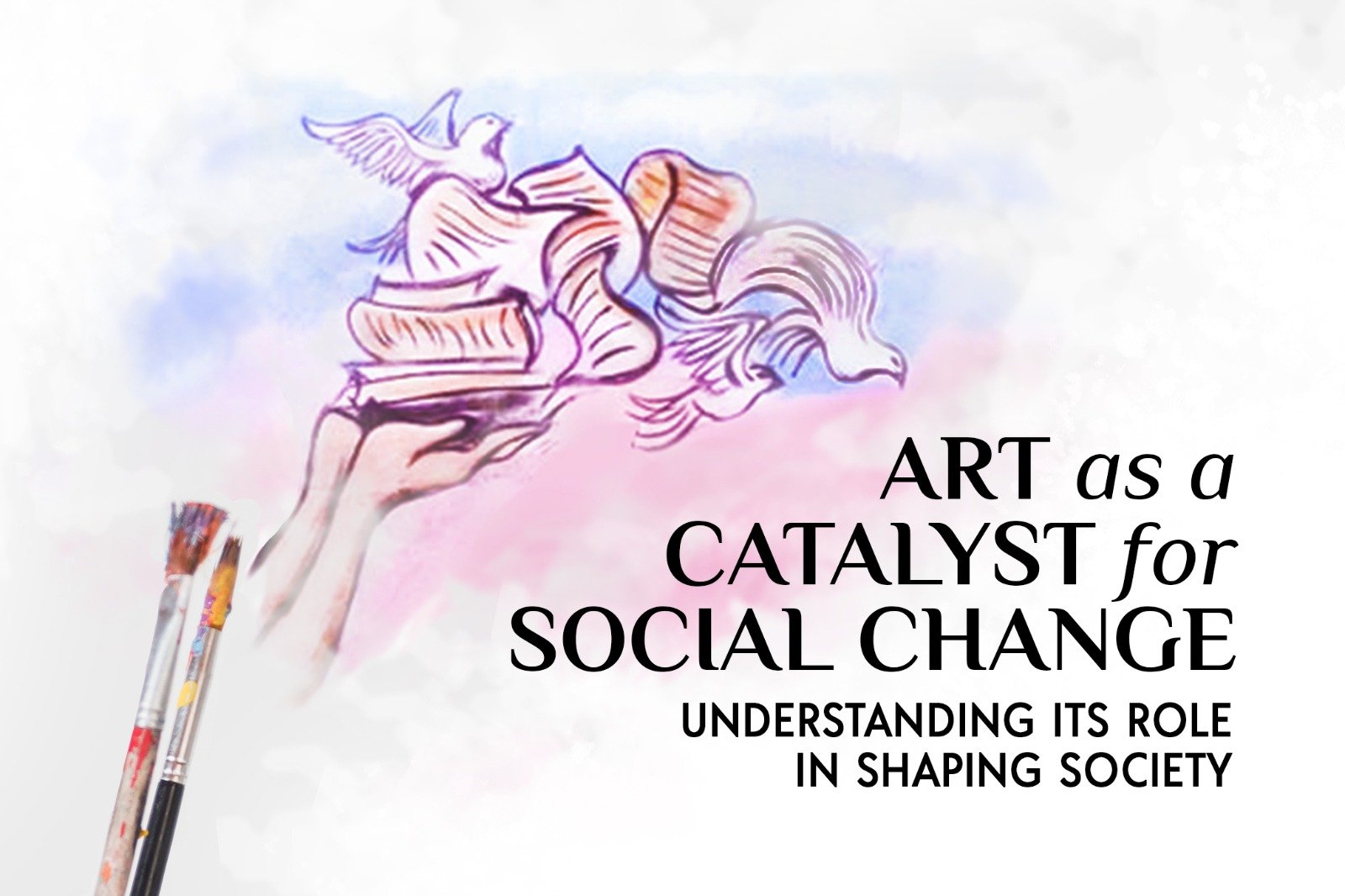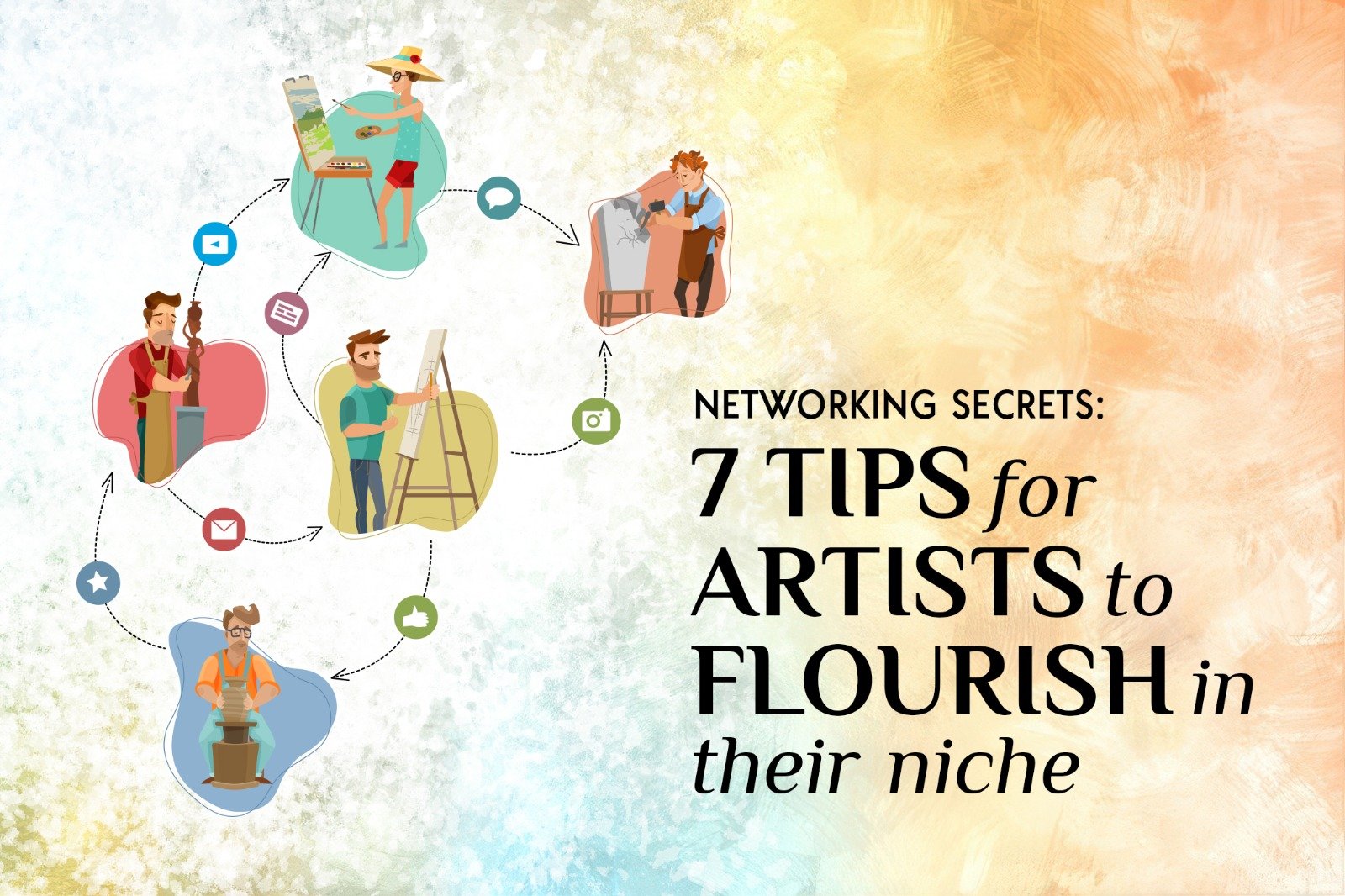

From Aesthetics to Activism : How Nature Inspires art across ages
The bond between art and nature is a timeless connection that has captivated artists throughout the ages. Nature, with its grandeur and intricate details, serves as a profound source of inspiration, shaping the creative expression of artists across different cultures and eras. From the breathtaking landscapes that stretch as far as the eye can see to the vibrant colors that dance on the wings of a butterfly, nature offers an endless array of subjects that artists yearn to capture and recreate.
In this exploration, we embark on a journey through the profound influence of nature on art, unveiling how artists have harnessed its breathtaking aesthetics, woven its rich symbolism, and encapsulated its transformative power.
Healing and Therapeutic Effects: Nature's calming and restorative effects have been recognized for centuries. Art inspired by nature serves as a form of therapy and healing. Be it through painting landscapes, crafting botanical illustrations, or sculpting natural forms, artists and art therapists use nature-themed art to promote relaxation, reduce stress, and nurture well-being. Engaging with art that mirrors the natural world provides solace, stirs positive emotions, and reconnects individuals with the healing potency of nature.
Aesthetics and Beauty: Nature's allure is undeniable. Artists find themselves irresistibly drawn to the captivating landscapes, vibrant palettes, and delicate intricacies that nature provides. With various artistic mediums at their disposal, they seek to transpose the essence of nature's awe-inspiring vistas, vivid sunsets, or the delicate patterns gracing a butterfly's wings. In doing so, they evoke a sense of wonder, inviting us to marvel at and appreciate the world that surrounds us.
Symbolism and Metaphor: Nature, as a wellspring of symbolism and metaphor, has long been a muse for artists. They skillfully pluck elements from the natural world to represent a multitude of emotions and concepts. A blossoming flower embodies growth and renewal, while the raging ocean evokes feelings of power and unpredictability. The eternal cycles of nature—the changing seasons, the journey of the sun, and the rhythmic tides—have been masterfully used as metaphors for the passage of time, the transience of life, and the ever-revolving cycles of human existence.
Spiritual and Transcendent Experiences: Nature possesses the power to ignite awe, wonder, and transcendence within us. Artists ardently seek to capture and convey these profound experiences through their creations. The expansive night sky, the serenity of a secluded forest, or the majesty of a cascading waterfall can elicit a deep connection to something greater than ourselves. Artists utilize their work as a conduit for communicating these spiritual and transcendent encounters with nature, prompting viewers to reflect upon their own relationship with the natural world.
Environmental Awareness and Activism: Nature's influence on art extends beyond mere aesthetics and symbolism. Artists harness their creative prowess to raise awareness about pressing environmental issues and advocate for conservation. Topics such as deforestation, climate change, and humanity's impact on ecosystems take center stage. By portraying nature's beauty and vulnerability or shedding light on the consequences of its degradation, artists motivate viewers to contemplate their relationship with the environment and to take action.
The profound connection between art and nature is an intricate and enduring one. From its undeniable beauty and rich symbolism to its spiritual, environmental, and therapeutic dimensions, the natural world continues to kindle the flames of inspiration in artists spanning diverse artistic disciplines. Through their creations, artists capture the essence of nature, allowing us to experience its marvels and ponder our own relationship with the world.
The Eternal Inspiration of Nature: The resonance between art and nature has transcended epochs, with nature standing as an everlasting muse for renowned artists. Art mimics nature, serving as a reflection of the artist's inner essence. Art not only reproduces the natural world but also reveals novel perspectives. In essence, art provides the missing voice that nature lacks to articulate its truths.
Diverse Artistic Expressions: Throughout history, artists and poets have entwined nature with human emotions and characteristics, infusing divinity into every landscape, flower, and insect through the deft play of light and shadow. Nature's inspiration has birthed a multitude of artistic movements, spanning the gamut from photorealism to abstraction.
Nature as a Vital Medium: Art's foundations are intrinsically tied to the natural world, for art relies on the resources the Earth offers. From ancient cave paintings to modern sculptures shaped from clay, a tangible connection exists between art and nature. This union between art and nature is inseparable, as art cannot exist without the canvas of the natural world.
The Essence of Life: Life, in all its forms, from fruits and flowers to animals, remains an enduring focus of celebrated artworks that deeply resonate with audiences. Artists capture the essence of life in ways that inspire and stir the soul. Beyond celebrating life's beauty, art increasingly serves as a medium to raise awareness about the environmental challenges we confront, such as climate change.
In closing, art's existence and inspiration are indebted to the natural world. The art-nature bond endures, reflecting the profound connection between humanity and the planet we call home. Choosing art that draws inspiration from the world around us strengthens our connection with the Earth, a crucial endeavor in these ever-changing times.




